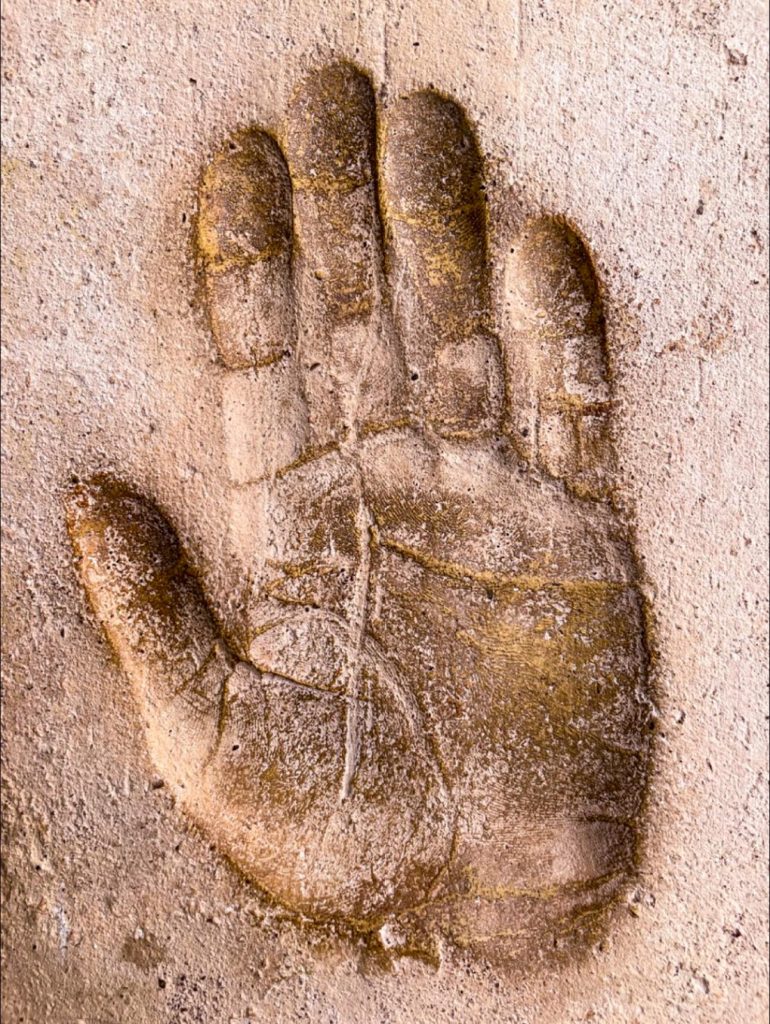Archaeologists working in the ancient city of Cherchell, Algeria, recently uncovered a discovery that bridges the gap between the modern world and the Roman past. While conducting routine excavations, they stumbled upon a Roman brick bearing a human handprint that has been preserved for over 2,000 years. This tangible link to history provides an extraordinary glimpse into the lives of those who lived during the Roman era.

The handprint found on the brick is not just a mark—it is a detailed imprint left by a human hand. Discovered among the ruins of Caesarea Mauretaniae, now known as modern-day Cherchell, the artifact is astonishingly well-preserved. Archaeological experts believe the hand belonged to a large adult male, likely a laborer or craftsman who participated in the brick-making process during Roman times. Remarkably, the imprint shows fine details such as the lines on the palm, individual fingers, and even traces of skin texture, providing a rare and deeply personal connection to someone from the ancient past.
Cherchell itself holds a significant place in history as a prominent Roman city in North Africa. Originally established in the 3rd century BC as the capital of a Berber kingdom, it later became an important Roman colony and a thriving Mediterranean port. Known as Caesarea Mauretaniae during Roman rule, the city was a bustling hub of commerce, culture, and architecture. It played a vital role in the empire’s expansion and influence in North Africa. The handprint-bearing brick not only symbolizes the labor and craftsmanship involved in building Cherchell but also highlights the human effort behind its enduring legacy.
The discovery of the brick allows archaeologists to learn more about the daily lives of the people who built this ancient city. By studying the artifact, researchers have uncovered details about the methods used in construction and brick production. Roman brick-making was a skilled craft, requiring precision and expertise. Each brick was shaped and dried before being fired in a kiln, a labor-intensive process that demanded coordination and craftsmanship. The handprint provides a rare glimpse into this process, revealing the personal touch of the laborers who contributed to the city’s construction.
Preservation of this remarkable artifact has become a top priority for researchers. Understanding its historical significance, archaeologists have carefully transported the brick to a specialized laboratory where it undergoes cleaning, stabilization, and documentation using cutting-edge imaging techniques. These steps ensure that the brick remains intact and that its details can be studied for generations to come. Advanced technologies are helping to reveal even more about the handprint and its historical context, shedding light on the lives of the individuals who shaped Roman-era Cherchell.
The significance of this discovery extends beyond the scientific and historical realm. Plans are already in motion to make the artifact accessible to the public through museum exhibits and educational initiatives. By sharing this extraordinary find, archaeologists hope to foster a deeper appreciation for North Africa’s cultural heritage and the enduring legacy of the Roman Empire. Museum visitors will have the rare opportunity to connect with a tangible piece of history, one that tells the story of the laborers and artisans who contributed to the development of one of North Africa’s most significant cities.
This single handprint, preserved for over two millennia, carries profound meaning. It is more than a mark on a brick; it is a reminder of the people who lived and worked in ancient times. These individuals, though long gone, left behind traces of their existence that allow us to better understand their world. The handprint is a deeply personal artifact, offering a connection to a laborer who likely never imagined that their mark would survive the passage of centuries.
The artifact also symbolizes the human aspect of history. While we often think of the Roman Empire in terms of grand achievements, monumental architecture, and influential leaders, this handprint reminds us of the ordinary individuals whose labor made those achievements possible. It provides a humbling perspective on history, highlighting the contributions of people whose stories are often overlooked.
As research continues, this remarkable handprint is expected to reveal even more insights into the lives of those who lived in Cherchell during the Roman era. It opens the door to understanding the city’s construction methods, labor practices, and social dynamics. The artifact represents a moment frozen in time, offering a glimpse into the everyday experiences of a Roman laborer. Through this discovery, we can connect with the humanity of the past, bridging the gap between ancient and modern worlds.
In conclusion, the handprint-bearing brick discovered in Cherchell is a testament to the enduring power of history. It serves as a link to the past, reminding us of the individuals who built the foundations of our world. By preserving and sharing this extraordinary find, archaeologists are ensuring that its story will continue to inspire and educate future generations. This singular artifact captures the essence of human history—a story not just of empires and conquests but of the hands that built it all. Through the detailed imprint of a single hand, we are reminded of the timeless connection between people, past and present, and the shared humanity that transcends the centuries.





